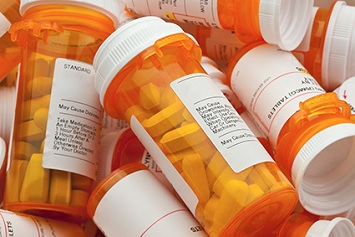The EPA has long emphasized that the Resource Conservation and Recovery Act (RCRA) and its regulations were written to address the generation of solid and hazardous wastes by industrial plants and the storage, treatment, and disposal of such wastes at permitted facilities and landfills. What the regulations were not intended to cover is the generation of wastes by retail facilities. While some of these wastes are indeed hazardous, the vast number and variety of retail businesses, as well as their lack of regulatory experience and economic means, are such that any imposition of the RCRA Subtitle C (hazardous waste) requirements would likely result in noncompliance on such a large scale that there could be no expectation that an effective level of enforcement could occur.

Over the years, waste pharmaceuticals, and particularly waste prescription pharmaceuticals, generated at healthcare facilities became one subtopic of particular concern related to waste generation in the retail sector. After an unsuccessful attempt that began in 2008 to place pharmaceutical wastes in the federal universal waste program, the EPA issued a final rule covering prescription pharmaceutical waste in February 2019. Under that action, the Agency drew clear distinctions between prescription pharmaceuticals and nonprescription pharmaceuticals and how these substances function within two processes termed reverse distribution and reverse logistics.
The EPA’s Office of Land and Emergency Management recently issued a memo to focus the attention of the Agency’s regional offices and stakeholders on the EPA’s regulations for reverse distribution of prescription pharmaceuticals and its policy on reverse logistics for nonprescription pharmaceuticals and other retail items. The memo made the point that both the regional offices and the regulated community are still adjusting to the 2019 rule and the ramifications of the two central terms. Following are key points about each term noted in the preamble to the 2019 rule.
Reverse Distribution
Reverse distribution generally describes the system through which unsold retail items flow after they leave the location where they were intended to be used or sold. A reverse logistics center is a facility that manages the reverse flow of these items. In the final rule, the EPA applies the term “reverse distribution” exclusively to prescription pharmaceuticals. In its rulemaking, the EPA learned from stakeholders that unused prescription pharmaceuticals are—“in most, if not all cases”—discarded. Accordingly, the final rule indicates that once the decision to discard a prescription pharmaceutical is made at the healthcare facility, the prescription pharmaceutical is a solid waste and a potentially hazardous waste subject to RCRA.
Apparently, one of the sticking points the EPA encountered during the rulemaking was whether prescription pharmaceutical wastes retain value and how this affects the RCRA waste classification. The issue of value typically comes up when the reverse logistics center obtains a credit from the manufacturer for the prescription pharmaceuticals it receives. In the rule, the Agency clarifies that once the decision to discard is made, the prescription pharmaceuticals become a solid waste whether or not the reverse distributor receives a credit from the manufacturer.
“The ‘decision point’ on whether a pharmaceutical is a solid waste is when it has been discarded or when the decision has been made to discard the material,” the EPA stated. “That is, when a pharmaceutical is discarded determines whether it is a solid waste, not whether the pharmaceutical has value.”
For shipments of noncreditable pharmaceutical wastes, the final rule requires that the healthcare facility use the hazardous waste manifest. However, waste codes for specific pharmaceutical wastes are not required for Item 13 (Waste Codes) on the manifest; instead, the healthcare facility may simply insert the word “PHARMS.” The rule does not require healthcare facilities to use a hazardous waste manifest or a hazardous waste transporter when shipping a potentially creditable hazardous waste pharmaceutical to a reverse distributor.
Reverse Logistics
The final rule codifies the Agency’s existing interpretation that nonprescription pharmaceuticals sent through reverse logistics are not solid wastes at the retail store if they have a reasonable expectation of being legitimately used/reused (e.g., lawfully redistributed for their intended purpose) or reclaimed. Furthermore, the rule establishes a policy that other retail items sent through reverse logistics are not solid waste at the retail store if they have a reasonable expectation of being legitimately used/reused. The policy is based on the Agency’s understanding that reverse logistics centers are designed to evaluate unsold retail items, analyze secondary markets, and assess the suitability of the unsold retail items for reuse in those secondary markets.
However, if nonprescription pharmaceuticals or other retail items do not have a reasonable expectation of being legitimately used/reused or reclaimed after they are returned to a manufacturer or vendor, then the nonprescription pharmaceutical or other unsold retail item would be a solid and potentially hazardous waste at the reverse logistics center.
